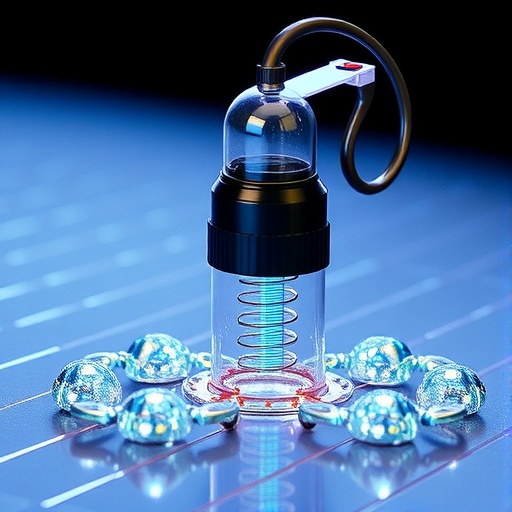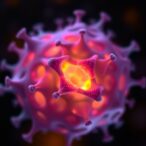
In the quest to conquer the limitations of semiconductor materials and their application in solar technologies, a pioneering research team at the Massachusetts Institute of Technology (MIT) has developed an innovative autonomous robotic system. This advancement comes at a crucial time when the demand for efficient energy sources continues to rise. Researchers face significant bottlenecks in accurately and quickly measuring key material properties, namely the photoconductivity of semiconductors. With this newly engineered robotic system, the team aims to revolutionize the traditional methods of material characterization.
Photoconductivity, a fundamental electrical property indicating how a material responds to light, lays the groundwork for assessing the performance of semiconductors in solar panels and numerous electronic devices. The MIT team’s autonomous system addresses the pressing need for rapid evaluations of photoconductivity in semiconductor materials. By utilizing a robotic probe, the researchers have crafted a technology that can perform these critical measurements with unprecedented speed and accuracy.
Integrating expert domain knowledge from the fields of materials science and engineering into a machine-learning model, the robotic system empowers itself to make informed decisions during its operations. Specifically, it discerns optimal contact points on various semiconductor samples, directing the probe to gather maximal data from each unique specimen. This intelligent decision-making process substantially accelerates the standard practices seen in laboratories across the globe, offering a glimpse into future methodologies that could shape semiconductor research.
.adsslot_6qHEKioFy0{width:728px !important;height:90px !important;}
@media(max-width:1199px){ .adsslot_6qHEKioFy0{width:468px !important;height:60px !important;}
}
@media(max-width:767px){ .adsslot_6qHEKioFy0{width:320px !important;height:50px !important;}
}
ADVERTISEMENT
The system demonstrated remarkable efficiency during a 24-hour test period, achieving over 125 unique measurements each hour. This capability enables the identification of the most promising material candidates for further development in high-performance photovoltaic applications. By amplifying measurement speed and precision, the robotic system not only contributes to achieving material characterization accuracy but also serves as a crucial stepping stone towards enhancing solar energy capture.
The research team, under the guidance of Professor Tonio Buonassisi, has encapsulated a wealth of knowledge and experience into the functioning of the robotic system. As part of their comprehensive strategy, they have utilized advanced imaging techniques to better understand the complex geometries of newly synthesized semicondutor samples — specifically focusing on the perovskite class that shows remarkable potential in solar applications. The distinct variety of shapes found in these samples required a flexible and adaptable robotic system to optimize contact and measurement efficiency.
The integration of machine learning and advanced robotics marries two pivotal areas of innovation that have the potential to spawn significant advancement in materials discovery. The neural network model employed in the system allows for self-supervised learning, bypassing the need for meticulously labeled data, which has historically posed challenges in training models. Instead, the robotic system utilizes analysis of the images to derive its own optimal strategies for material engagement.
As it operates, the robotic system captures images of segments from the printed semiconductor materials with its onboard camera. This computer vision functionality enhances the overall effectiveness of the robotic system, as it navigates through the intricacies of various shapes to pinpoint exactly where contact should be made. This sophistication not only streamlines the experimental process but also improves the reliability of the photoconductivity measurements obtained.
In a commendable feat, the researchers were able to enhance the efficiency of the robotic probe’s path planning algorithm. They discovered that introducing a controlled level of randomness, or ‘noise’, into the computational procedures allowed the probe to consistently identify shorter, optimal routes between measurement points. This innovative approach has implications extending beyond semiconductor research. It signals a future where robotics and machine learning could profoundly influence various realms of scientific inquiry.
The experiments conducted demonstrated that the proposed system could yield detailed insights into semiconductor material performance, bringing to light areas exhibiting higher photoconductivity alongside any potential material degradation. This reveals critical avenues for further investigation and refinement in material design and synthesis. The fusion of high-speed measurements and rich data acquisition is redefining potentials in materials science, specifically in the context of sustainable and renewable energy technologies.
As the MIT research team embarks on further refinements of this robotic system, the ambition is clear: to create a fully autonomous laboratory dedicated to the discovery and characterization of next-generation materials. This venture is not solely confined to materials science or solar energy applications, as its reverberations could benefit various sectors, including electronics, renewable energy capture, and beyond. The implications of successfully creating such an autonomous laboratory could lead to a new era in materials development, fundamentally transforming how scientists approach the exploration of complex materials.
Such groundbreaking work is made possible through the collaboration of interdisciplinary expertise among the research team members, significantly enhancing innovation within autonomous systems. The journey toward a fully autonomous materials discovery lab stands on the cusp of exciting developments, promising to yield materials that could power future energy technologies sustainably and efficiently.
As scientific research evolves, tools like this autonomous robotic system are crucial for keeping pace with growing demands for innovative solutions to contemporary challenges. In the fast-moving landscape of materials discovery, mitigating barriers to measurement and analysis through the introduction of advanced robotics and machine learning offers a strategically advantageous route to success. This journey not only accelerates scientific discovery but also lays the foundation for further explorations in high-performance semiconductor technology poised to shape future advancements in solar energy.
Given the current trajectory of renewable energy demands and technological advancements, the implications of the MIT research team’s work are vast and impactful. Their dedication to developing a self-operating analytical system could lead to breakthroughs that redefine entire industries, while opening new paths towards sustainable energy generation techniques that rely on next-generation semiconductor materials.
The potential outcomes emerging from this research serve as a beacon for future endeavors in materials science. The work undertaken by Buonassisi and his associates paints a promising picture of a future where robotics and AI seamlessly integrate into the core of scientific exploration, fostering a speedier and more accurate landscape for advancements in ocular engagement of semiconductor materials.
Subject of Research: Autonomous Robotic System for Measuring Semiconductor Properties
Article Title: A Self-Supervised Robotic System for Autonomous Contact-Based Spatial Mapping of Semiconductor Properties
News Publication Date: 4-Jul-2025
Web References: http://dx.doi.org/10.1126/sciadv.adw7071
References: [Information not provided]
Image Credits: [Information not provided]
Keywords
Tags: advancements in energy-efficient materialsautonomous probes for electronic devicesautonomous robotic technology in semiconductor researchenhancing solar panel efficiencyhigh-speed measurements of material propertiesinnovative approaches to semiconductor testingintegrating engineering with roboticsmachine learning in materials scienceMIT innovations in solar technologyoptimizing semiconductor material evaluationrapid assessment of photoconductivityrobotic system for material characterization



